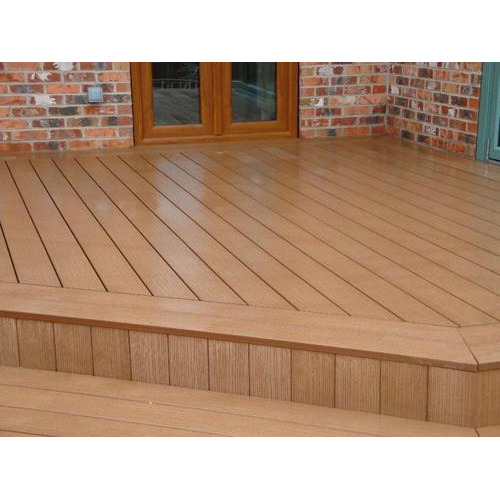“A good deck is not built by chance, but by careful planning and attention to detail.”
Did you know that PVC decking has grown in popularity because it resists rot, insects, and moisture far better than wood? Custom PVC Decks Construction is an excellent choice for homeowners seeking low maintenance and long-lasting outdoor spaces. However, installing a PVC deck may seem simple, but mistakes during the process can lead to expensive repairs or reduced lifespan. Here are common pitfalls and guidance to help your deck remain safe, beautiful, and durable.
1. Skipping Proper Planning and Measurements
A major mistake is rushing into installation without a clear plan. Measuring your space inaccurately can cause boards to be too long or too short, leaving gaps or overhangs. Take time to draw a layout of your deck, including joist placement and board direction. Proper planning ensures your PVC deck fits perfectly and reduces wasted material. Always double-check your measurements before cutting any boards.
2. Choosing Low-Quality Materials
PVC decking comes in different grades, and choosing cheaper options may save money initially but can lead to warping or fading over time. High-quality PVC boards are designed to withstand extreme weather and heavy foot traffic. Check product reviews and consult with experts if unsure. Investing in good materials will keep your deck looking attractive for years without frequent replacements.
3. Ignoring Expansion and Contraction
PVC expands and contracts with temperature changes. A common mistake is placing boards too close together or screwing them too tightly. This can lead to buckling or warping during hot summers. Always leave proper spacing between boards and use the recommended fasteners for PVC. Following manufacturer guidelines helps your deck handle seasonal shifts smoothly.
4. Poor Substructure Installation
The strength of your deck depends on its foundation. Many homeowners overlook joist alignment, spacing, or support posts. Uneven or weak framing can make the deck unstable and unsafe. Take care to build a strong, level base using treated lumber or approved metal supports. Check for levels frequently during construction. A solid substructure ensures your PVC deck remains sturdy for years.
5. Using Wrong Fasteners or Clips
Using nails or screws meant for wood can damage PVC boards. They may cause splitting, scratching, or corrosion over time. Always use fasteners recommended for PVC decking. Hidden fasteners are also a great option to maintain a clean, smooth surface without visible screws. Correct fastening extends your deck’s life and maintains its neat appearance.
6. Skipping Proper Cleaning and Maintenance
While PVC decks are low maintenance, they still need cleaning to prevent dirt buildup or mold growth. Using harsh chemicals or pressure washers can damage the boards. Clean your deck with mild soap and water or a manufacturer-approved cleaner. Routine maintenance keeps your deck looking new and prevents slippery surfaces during rain or snow.
7. Poor Drainage Planning
Water accumulation is a silent enemy for any deck. Even though PVC resists rot, stagnant water around the deck edges or under the boards can lead to algae or moss. Ensure proper slope for water runoff and leave gaps for ventilation. Installing your deck with drainage in mind will keep it safe, dry, and comfortable to use year-round.
8. Overlooking Local Building Codes
Building codes exist to keep your deck safe and legal. Some homeowners install decks without checking local regulations, which can result in fines or unsafe structures. Verify your project meets Richmond Hill’s building standards. Confirm permits, railing heights, and spacing guidelines before starting installation. Compliance ensures safety and avoids costly future issues.
9. Neglecting Professional Guidance
Trying to install a PVC deck without experience can lead to errors that are hard to fix. Consulting a professional, especially for complex designs or large spaces, can save time and money. Experts can provide advice on materials, layout, and installation techniques tailored to your property. Deck Companies offer reliable services to guide you through the process efficiently.
10. Underestimating the Cost of Accessories
Decking boards are not the only expense. Railing systems, fasteners, trims, and finishes all add to the total cost. Ignoring these costs can cause budget issues midway. Plan your budget to include all necessary accessories to avoid cutting corners, which may affect deck safety and appearance.
In Closing
Installing a PVC deck can transform your outdoor space, providing years of enjoyment with minimal upkeep. By avoiding these mistakes, you ensure your deck remains safe, beautiful, and durable. If you live in Richmond Hill or nearby areas, consider consulting Deck Companies in Richmond Hill to guide your project from planning to completion. Their local expertise ensures a smooth process and a deck that perfectly suits your property and lifestyle.
FAQ’s
Q1: How long does a PVC deck last?
A PVC deck can last 25 to 30 years with proper installation and care. High-quality boards resist rot, fading, and insects.
Q2: Can I install a PVC deck myself?
Yes, small decks can be DIY projects. However, larger or complex designs are best handled by professionals.
Q3: How do I clean a PVC deck?
Use mild soap and water or a manufacturer-approved cleaner. Avoid harsh chemicals and high-pressure washers.
Q4: What spacing should I leave for PVC boards?
Follow manufacturer guidelines, usually 1/8 to 1/4 inch between boards, to accommodate expansion and contraction.
Q5: Do PVC decks require sealing or staining?
No, PVC decks are low-maintenance and do not require staining or sealing like wood.



